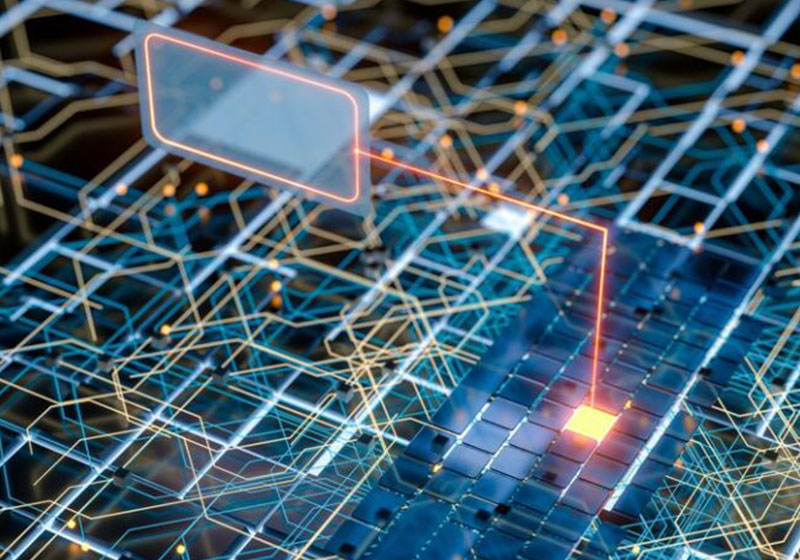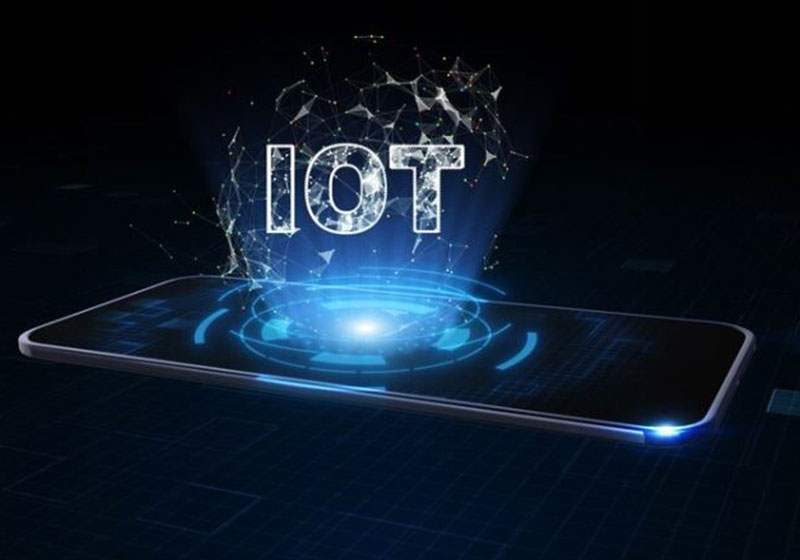AI
Smart Grid Technology: How AI is Making Energy Consumption Efficient
 Updated 01 Nov 2023
Updated 01 Nov 2023

The world is highly dependent on energy which comes from different sources. Previously, people were more dependent on coal, fossil forces and other energies, but nowadays, people have become more conscious about using healthy sources of energy such as solar energy, water force energy, wind energy, etc. The world is changing rapidly, even in terms of energy production and energy consumption. Nowadays, energy is not only produced by global and big companies but also by several new and comparatively smaller companies as well as consumers. This rapidly-changing scenario leads to an increased demand and importance of the Smart grid in today’s world.
What is a Smart Grid?
A smart grid is a smart integrated network that allows energy distribution and digital communication technology to connect in a two-way flow of electricity and data. It is a smarter choice for utility companies as it allows them to generate, transmit and distribute electricity in a more efficient way. The consumers also benefit from the information and data provided, which helps them to understand energy usage and energy production in a better way. It also allows consumers to store energy-related equipment, such as EV batteries and solar panels, properly.
The Market Status of the Smart Grid
According to recent reports, the market of smart grids is rapidly increasing across the globe. The global smart grid market size was USD 29.45 billion in 2020 and it is estimated that it is going to reach USD 140.53 billion by 2028 at a CAGR of 21.9% in the 2021-2028 period. So, the picture is clear. More and more people across the globe are willing to use smart grid technology which also increases the importance of advancements. It is where AI technology comes into the picture.
What is the Difference Between a Traditional Grid and a Smart Grid?
The main difference between a traditional and a smart grid is that the smart grid allows the exchange of information in both directions across the network. The information flows from utility companies to consumers and vice versa. There are several advanced features that get incorporated into a smart grid, including
1. Advanced Technology
The most advanced technologies, such as digital technologies, cloud storage and AI, are incorporated into the smart grid, allowing the grid’s devices and assets to communicate more effectively. It offers better control and self-regulation. The addition of artificial intelligence services into these grids has made them more reliable and efficient.
2. Distribution
The energy generated by producing consumers as well as renewable energy sources (For example, wind and solar energy) can be uneven. The latest smart grid technology coordinates, stores, and distributes power from these intermittent sources into a steady flow.
3. Generation
The predictive analytics used in smart grids offers high-demand strains that can be distributed and forecasted to multiple plants without any hazards.
4. Smart Sensors
There are advanced sensors, such as IoT sensors, that are used across the network to detect risks at an early stage. It allows the network to balance the load and reduce the outages without direct intervention by operators. These sensors can also detect mechanical problems at an early stage that allows simple troubleshooting and repairs. These sensors make the technicians aware when it’s necessary.
5. More Choices for customers
It allows customers to get more choices in terms of energy suppliers, cooperatives and microgenerators.
Use Cases of Smart Grid Technologies
Here are some use cases of this advanced technology which also represents the application of iot technology in the sector of energy. The list of use cases includes
1. Smart Meters
An advanced metering infrastructure that works by providing a line of bi-directional communication between the device and the utility to gather, disseminate and analyze user energy consumption data. It not only provides real-time alerts around a meter or grid damage or outages but also increases energy savings and monitors as well as controls the power quality.
2. Solar Farm Monitoring
This technology not only contributes to an increased ROI but also the reduction of Co2 emissions. IoT-based smart grids help solar farms to improve their operations efficiently. It not only improves predictive analysis but also contributes to streamlining maintenance with its advanced data analysis technologies. It also can easily get more out of each panel by optimizing for factors. There are also some other worth mentioning use cases, including battery monitoring systems, iot based EV chargers, etc.
What are the Applications of AI in Smart Energy Solutions?
AI development services are vastly used to make smart grids meet all the requirements of the time. Here are some applications of AI technology in smart grids.
1. Agility and Resilience
AI technology is used to identify the parts of the grid that are vulnerable. It allows the cooperatives and producing consumers to store surplus energy during peak generation times and distribute it during the gaps in the flow for more consistent energy distribution.
2. Precise Forecasting
The predictive analytics models allow the cooperatives and producing consumers to predict the power loads and the generation of renewable energy. When this information gets combined with the data generated by AI, the predictions become more accurate than before.
3. Precise Outage Alerts
The advanced AI infrastructure delivers more precise outage alerts. The predictive capabilities of AI technology can notify operators about upcoming outages, even before it happens. This highly-advanced system can also differentiate between street, individual and zonal outages.
4. Optimized Power Yield
In the stage of energy generation, AI-powered sensors are also used to optimize power output. AI tools also help to increase the productivity of solar energy by predicting solar radiation as well.
5. Improved Automated Switching
The advanced AI tools can also predict grid imbalances and differentiate between a brief power interruption and a full-on outage. This allows utility companies to reroute energy or isolate the affected areas before damage occurs. AI tools keep the essential equipment safe that are used to isolate and repair faults.
6. More Flexible Demand-side Management (DSM)
The AI meters in homes and offices can help utility companies to deal with the high-demand strain. These smart meters help schedule, plan, monitor and execute the changes in energy demand to make it easy for providers to meet them.
7. Improved Security
AI-generated tools offer enhanced security by detecting network attack features, malware and intrusion. These tools can provide enhanced network security protection to the power systems so that these systems cannot be hacked or attacked.
What Benefits do Consumers Get Because of the Applications of AI in Smart Energy Solutions?
1. Lower costs
The first benefit that consumers get is lower costs, as an AI-powered smart grid allows consumers to get hourly assessments. It allows them to understand when and where they use the most energy to optimize their daily routine and lower usage during peak times. It also allows producing consumers to manage energy production and sell it back to the grid to reduce costs.
2. Improved Sustainability and Transparency
The AI tools allow consumers to have more information about where they are getting their energy. It offers transparency and sustainability. It provides consumers with information so that they can choose more sustainable options.
3. Fewer Outages
AI tools can effectively reduce outages, benefiting both residential and commercial consumers. It increases the efficiency and security of the supplied energy.
What is the Future of Smart Grids?
It is anticipated that smart grids will not only make power more feasible but also increase the demand for energy. As the smart grid technology allows consumers to take real-time control of their energy bills, consumers will open-heartedly accept this energy system in the future. It is also anticipated that the energy supply through this technology will become mainstream in the upcoming years. As the market of electric vehicles is increasing across the globe and this technology facilitates large-scale electric vehicle charging, the multidimensional market opportunities for this technology will make it one of the biggest industries across the globe in the upcoming years. As the opportunities will increase with time, the technology will surely meet them and become more advanced, offering more efficiency to the consumers as well as the suppliers.
Ending Words
AI tools and sensors have become the need of time. Every AI development company across the globe is focusing on improving the benefits of AI-driven tools for different industrial purposes, including the energy generation and distribution industry. It can be assumed that this technology will improve the process even further in the upcoming days. Q3 Technologies is a leading company that offers high-quality technology services for smart grid applications that can precisely meet the market demand as well as the changing requirements of smart grid operations. The company aims to take the lead in the market of smart grid technology that will soon become one of the primary energy sources across the globe.
Table of content
- – What is a Smart Grid?
- – The Market Status of the Smart Grid
- – What is the Difference Between a Traditional Grid and a Smart Grid?
- – Use Cases of Smart Grid Technologies
- – What are the Applications of AI in Smart Energy Solutions?
- – What Benefits do Consumers Get Because of the Applications of AI in Smart Energy Solutions?
- – What is the Future of Smart Grids?
Need to hire offshore developers?
Explore More

Mobile Applications

